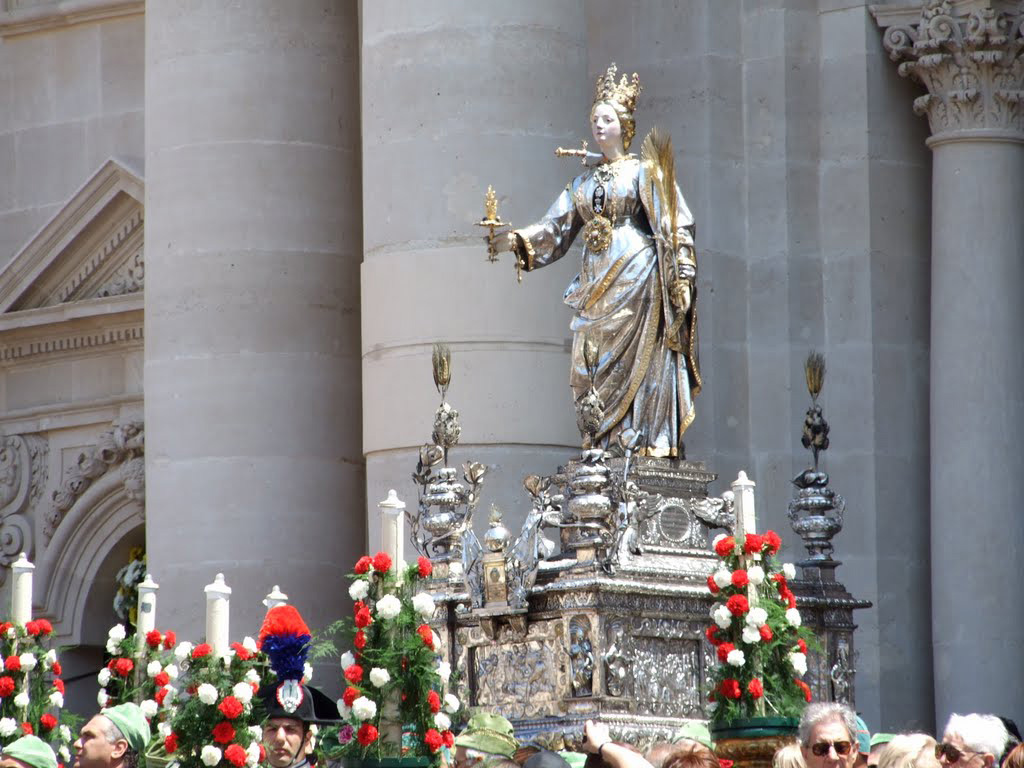The modern day celebration of Santa Lucia (Saint Lucy’s Day) takes place on December 13th, where the ancient tradition dates back to 1337. In Italy, the feast day can be traced back to Sicily. Santa Lucia is the patron saint of the city of Siracusa, where she is believed to have been born in 283 AD. The city honors her every year with a week-long celebration of festivities and fireworks, sweets and the vow not to eat pasta or bread. There are two processions, one on the 13th and another on the 20th of December, during which a procession with the silver statue of Santa Lucia by sculptor Pietro Rizzo (1599) is paraded through the streets.
Cuccìa is eaten in memory of Saint Lucy’s miraculous averting a famine. According to the legend, the Saint rescued the Syracusans when two ships loaded with wheat, miraculously arrived in Syracuse, affected by a harsh famine. The starving population was so desperate to eat that they boiled the wheat and ate it simply dressed with olive oil. This was the first cuccìa ever made. The sweet cuccìa was made by adding cooked wine or honey. It is said that the large grains of soft wheat are representative of her eyes and are a treat only to be indulged in once a year. Later on, chickpeas and fava beans were added to the recipe. Every town and every home in Sicily has its own recipe for cuccìa.
In northern Italy, Santa Lucia is celebrated similarly to the Saint Nicholas tradition. She arrives in the company of a donkey and her escort Castaldo and brings the good children gifts in the night between December 12 and 13. Children are asked to leave some coffee for Lucia, some flour for the donkey and bread for Castaldo. They must not watch Santa Lucia delivering these gifts or she will throw ashes in their eyes, temporarily blinding them. Possibly this tradition stems from the 14th century, when, according to the legend, a brutal eye epidemic plagued the children of the city of Verona. At their wits end, the parents decided to organize a barefoot pilgrimage to the Saint Agnese church, dedicated to Santa Lucia. To convince the children scared off by the cold to partake in the procession, the parents promised them that at their return home the Saint would bring them treats and presents. That perspective convinced the children to follow their parents despite the bitter cold and soon the epidemic was brought under control.
Saint Lucy’s Day commemorates the 3rd century martyr, who, under the Diocletian Persecution, brought food and aid to Christians hiding in the catacombs using a candle-lit wreath to light her way and leave her hands free to carry as much food as possible. She was born to a wealthy household and was seeking help for her mother’s long-term illness at the shrine of Saint Agnes in her native Sicily, when an angel appeared to her in a dream beside the shrine. As a result, Lucy became a devout Christian and was denounced to Roman authorities and the man she was to wed. Through numerous attempts to end her life, she remained steadfast and resolute. She would not renounce her beliefs and only went to the Lord after she was given her final Sacrament.
Lucy’s legend did not end with her death. She warned the Roman governor that God would punish him for his persecutions. When he heard this he ordered the guards to gouge out her eyes; however, when her body was being prepared for burial they discovered her eyes had been restored. It is for this reason that St. Lucy became the patron saint of the blind and for those with sight impairment.





